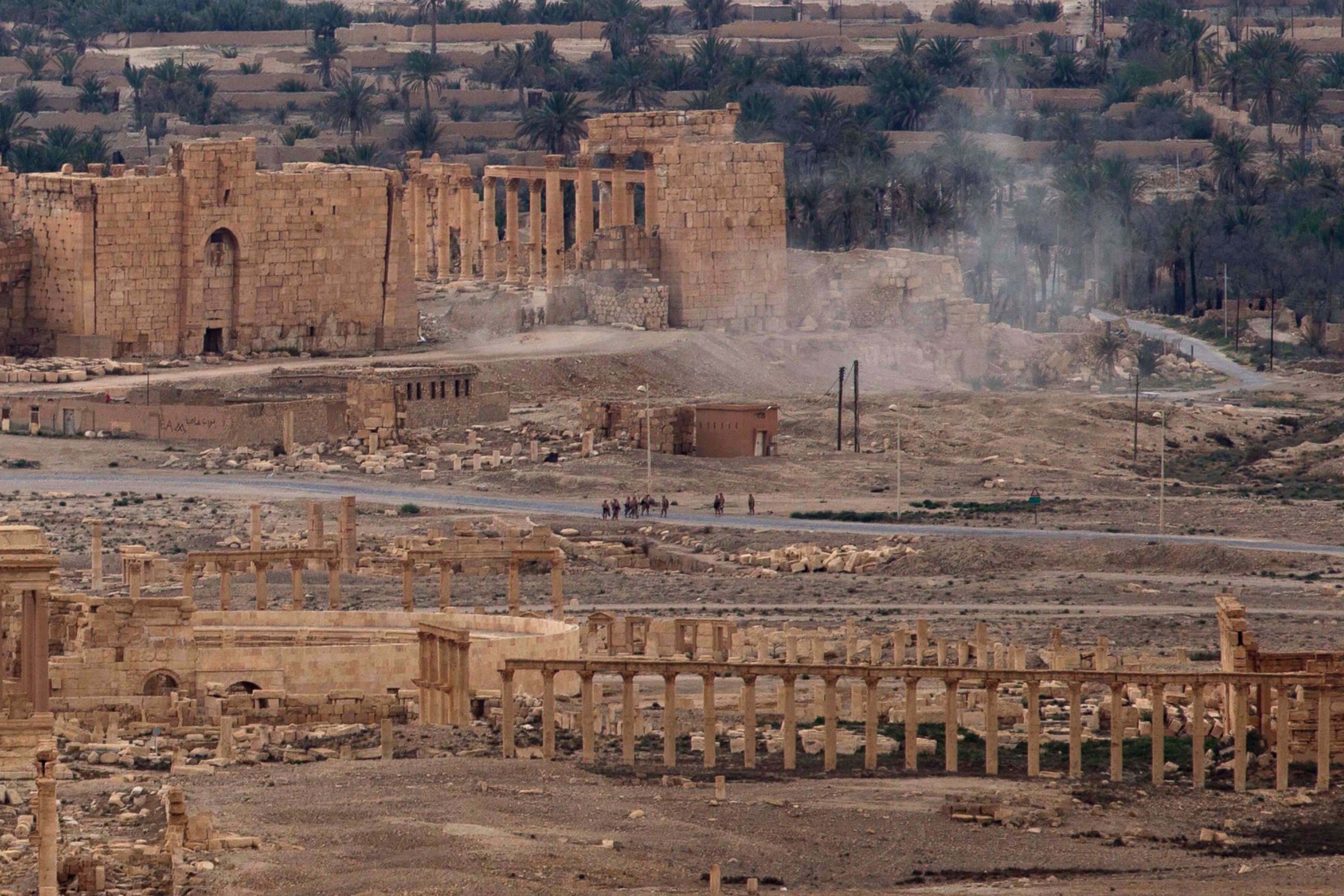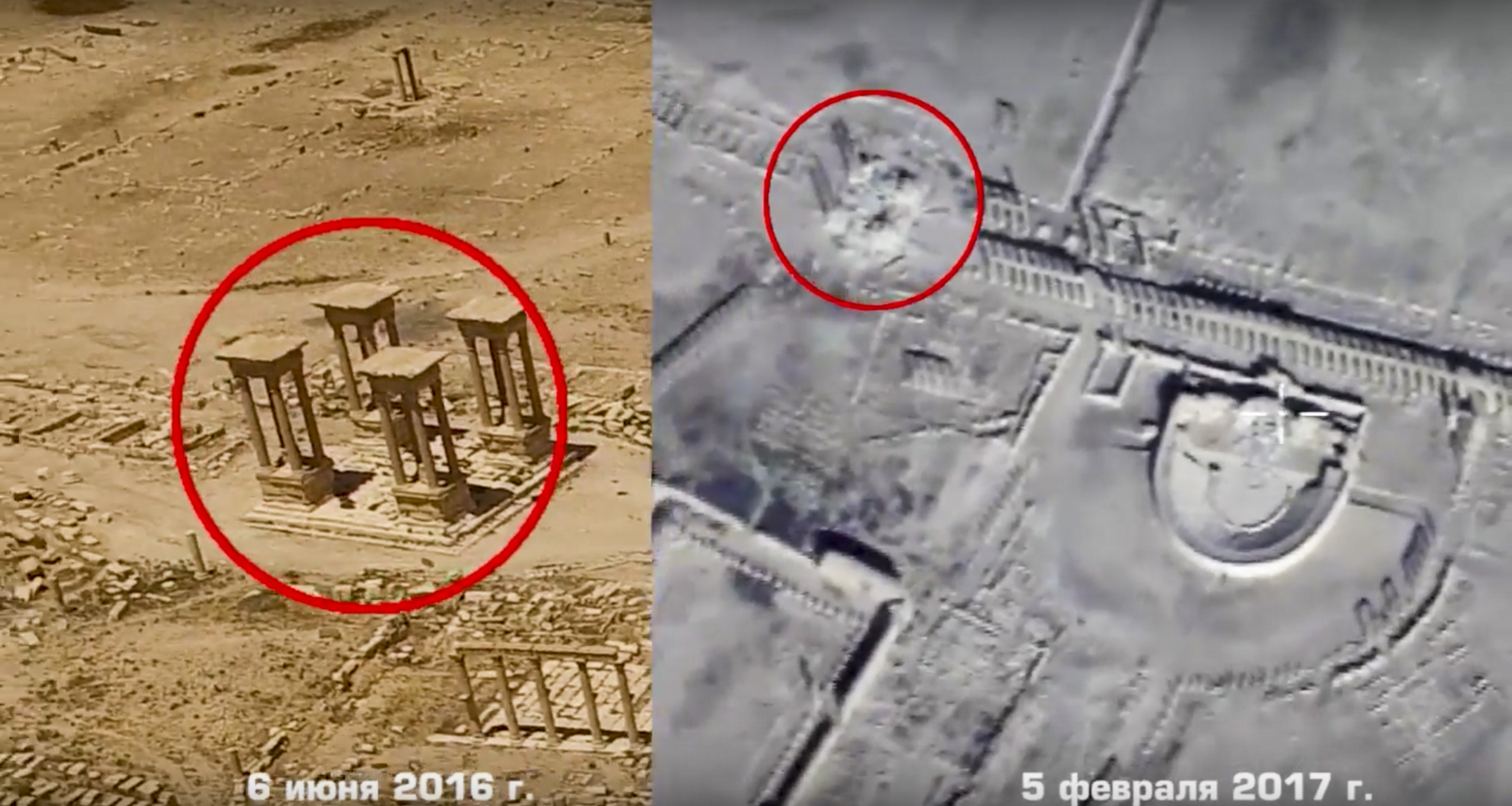Report suggests Russia tried to conceal airstrikes on Syrian hospitals
New report suggests Russian military may have targeted Aleppo hospitals.
— -- A new report released Monday provides fresh evidence that Russian and Syrian government forces repeatedly targeted hospitals in rebel-held areas of the Syrian city of Aleppo and shows Russian efforts to conceal the attacks.
Russian officials, from military officers up to the Kremlin's chief spokesman, have regularly denied the country's air force has ever targeted hospitals or bombed indiscriminately since Moscow entered Syria's civil war in earnest in 2015.
But the new analysis, which includes satellite images, eye-witness reports, CCTV footage, video and photographs from the ground and even some from Russia's own state media, undercuts those claims and weakens Moscow's arguments that its air campaign was conducted with restraint.
The 70-page report by the Atlantic Council, a Washington-based research center, represents one of the more comprehensive efforts to record the bombing visited on Aleppo as Syrian government forces, backed by Moscow, sought to retake it. It provides evidence that, alongside indiscriminate bombing, pro-government forces also used incendiary, cluster and chemical weapons.

Aleppo, now Syria's second largest city, became a byword for brutality last fall, as forces loyal to Syrian president Bashar al-Assad launched an offensive against its rebel-held eastern half. Western governments accused Assad and Russia of committing war crimes there with indiscriminate bombing and siege tactics.
The last of the rebel fighters were evacuated from Aleppo in December of last year under a deal brokered with Russia, after pro-government forces re-took the city following months of constant bombardment. Tens of thousands fled the devastated rebel areas of the city as it fell. Reports have estimated that as many as 3,000 civilians were killed during the months of fighting.
Aid organizations and opposition groups on the ground at the time said Russia and Syria were deliberately targeting medical facilities in an effort to break rebels' resistance -- a practice outlawed by the Geneva Convention that, if proven, would constitute war crimes.
Russian and Syrian government officials have denied ever targeting hospitals. Russian president Vladimir Putin's spokesman, Dmitry Peskov, has said there is no truth to the claim.
"Those who make such statements are not capable of backing them up with proof," Peskov told reporters last February.
However, the Atlantic Council report states there is evidence that hospitals were repeatedly hit by powerful munitions over several months, most likely dropped from the air. The report matches closed-caption television footage from inside the hospitals with geo-located photos of damage outside, reconstructing the different strikes and allowing the investigators, the report says, to confirm the timeline of the bombings. Syrian-American Medical Association figures in the reports show Aleppo's 15 clinics were struck repeatedly -- 73 times between June and October of 2016.
Assad also denied targeting hospitals, telling the BBC "as a government, we don't have a policy to destroy hospitals or schools or any such facility."
But the new report suggests the scale and indiscriminate nature of the attacks on hospitals indicates they were deliberately targeted. An analysis by a U.N. satellite research program shows more than 33,000 buildings were damaged in Aleppo, with the destruction mostly focused on the rebel-held eastern part of the city. A Human Rights Watch comparison of satellite imagery of eastern Aleppo at the height of the siege between September and October of 2016 shows at least 950 new impact sites—indicating enough strikes to suggest one blast every hour for a month. The report notes that the aerial campaign intensified once Russia entered the fight in 2015.

The report adds another layer of analysis from multiple sources familiar with the attacks on hospitals, building on previously available information from rights agencies. Much of the report was produced by Elliot Higgins, a senior researcher at the Atlantic Council's Digital Forensic Research Lab, who has become known for his work using open source materials, including video and commentary published on social media, to show up Russian efforts to conceal its involvement in eastern Ukraine.
His new report appears to catch the Russian military misrepresenting its own satellite imagery of a hospital bombing in Aleppo.
In October, Lt.-General Sergei Rudskoi, presented satellite imagery at a news conference that he said showed an alleged series of attacks on Aleppo's al-Sakhur hospital between September 28 and October 3 had never taken place. Rudskoi showed images he said were taken between September 24 and October 11 showing "no change" to the hospital's exterior.
But satellite images covering September 25 to October 13, included in the Atlantic Council report and provided by the firm Digital Globe, show a large bomb-crater appearing next to the hospital, as well as damage to the hospital building, which appeared to confirm it had suffered attack. CCTV footage from October 3 also showed a huge blast striking by the building.
The report also highlights at least two instances where Russia's own media efforts unintentionally revealed the use of illegal incendiary and cluster munitions. In one instance, the Russian state broadcaster, RT, inadvertently published a video of Russian warplanes appearing to be loaded with bombs marked as cluster weapons. The channel later published a new version of the video with those images edited out. On another occasion, Russia's defense ministry released a photo of its troops entering an opposition area after Aleppo fell, supposedly to clear it of explosives left by rebels. The photo showed the Russian soldiers encountering a Russian cluster bomb, the Atlantic Council report notes.
Russian state media and pro-Kremlin commentators have aggressively sought to discredit such reports in the past, drawing attention to the fact that much of Western media reporting on the conflict has relied on information provided by groups inside opposition-held areas. That criticism has been acknowledged by some journalists from Western outlets, who have admitted discomfort at not being able to report directly from the city while receiving polarized information from both sides.
The Atlantic Council report acknowledged that the violence was far from limited to the government side, noting rebels also fired indiscriminately into civilian areas. But, the report notes, "there is little equivalence between the two sides when considering the scale and resources employed in the conflict."



